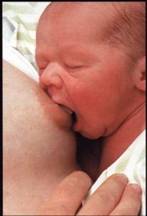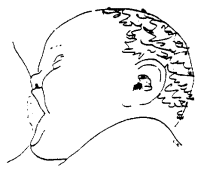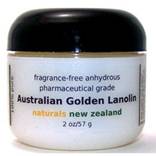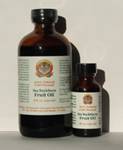Getting sore, cracked nipples is a common problem for nursing mothers -The following tactics have helped many mothers avoid suffering from the pain of sore nipples.

The baby should be a little bit up from horizontal - and turned so that his chest, belly and thighs are against you with a slight tilt so the baby can look at you. You can use a pillow to help support him or her in this position. The baby should approach the breast with the head just slightly tilted backwards, which results in the nipple automatically pointing to the roof of the baby's mouth.

The baby should latch on with a wide open mouth covering as much of the areola as possible - Lightly run your nipple along the baby's upper lip from one corner of the baby's mouth to the other until his/her mouth is wide open - that is the moment for him or her to latch on.Bring the baby toward the breast such that his or her chinis the first to touch your breast. The nipple points to the roof of the mouth, not the middle of the mouth.
A properly latched on baby will be covering more of the areola with his/her lower lip than with the upper lip - The baby's lips should be everted (see picture left).
You should not be feeling any pain. If the baby is latched on and sucking correctly.
Do not allow the baby to suck on just the nipple. i.e. with the mouth not covering most of the areola. Use your forefinger next to the corner of the baby's mouth to break the suction, and have the baby latch on again properly. A good "latch on"also reduces the possibility of the baby getting "gas", and allows the baby to better control the flow of milk.

Expose your nipples to full sun for 30 minutes/day

Preferably 100% pure, anhydrous, fragrance-free, pharmaceutical grade lanolin (extracted from sheep's wool). A small amount goes a long way. Gently rub on the nipples between feeds. Wipe off any excess lanolin remaining just before feeding.
Australian Golden Lanolin for Sale at Amazon.com
Some other good brands:Pur-LanTM or Lansinoh TM,
Mix 1 tsp. salt in 1 cup of warm water in a small bowl. Soak the sore nipple(s) in this solution for 5-10 minutes and then allow to air-dry.


Sea buckthorn oil is the MVP for healing skin problems. For most benefit, use organic, cold-pressed oil from the sea buckthorn berry. It costs around $25 for 2oz., but that should be more than enough to deal with the problem. This treatment is also excellent if the soreness is due to thrush, where the baby has a white fungus lining the inside of the mouth. Rub the oil on your nipples and inside the baby's mouth. It's perfectly safe - some people take this oil as a health-supplement.
http://www.siberiantigernaturals.com/seabuckthornoil.htm
When airing is not possible, plastic dome-shaped breast shells(not nipple shields) can be worn to protect your nipples from rubbing on your clothing. Nursing pads keep moisture against the nipple and tend to stick to damaged nipples. If you leak a lot you can wear the pad over the breast shell
A teat is placed over the nipple to enable the baby to suck on the breast without direct contact. However, most mothers have NOT found these to be very helpful.Also, they tend to reduce the milk supply, and once the baby is used to it, he/she may not want to return to the breast.
Comfrey ointment. Softens and strengthens nipples. Soothes /heals sensitive nipples.
Yarrow leaf poultices / yarrow infused oil. Provide almost instantaneous pain relief and heal cracked nipples rapidly.